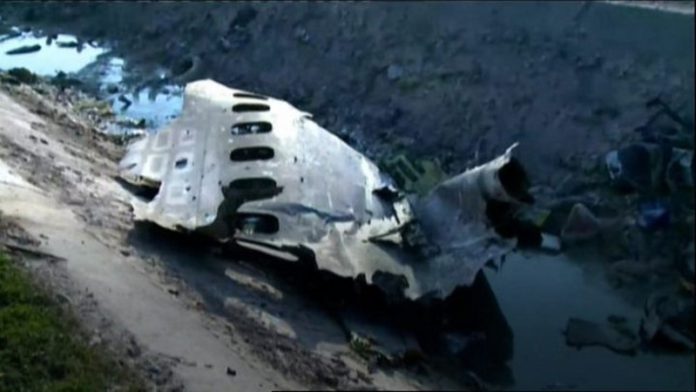Iran has admitted “unintentionally” shooting down a Ukrainian passenger jet, killing all 176 people on board.
An investigation found that “missiles fired due to human error”, President Hassan Rouhani said. He described the crash as an “unforgivable mistake”.
The military said the jet turned towards a sensitive site belonging to Iran’s Revolutionary Guards and was then mistaken for a hostile aircraft.
Iran had previously rejected suggestions that it was to blame.
The downing of Ukraine International Airlines flight PS752 on Wednesday came just hours after Iran carried out missile strikes on two airbases housing US forces in Iraq.
The strikes were a response to the killing of senior Iranian commander Qasem Soleimani in a US drone strike in Baghdad on 3 January.
Iran initially denied reports that one of its missiles had brought down the Ukrainian plane near the capital, Tehran. But pressure quickly mounted after Western intelligence officials said evidence pointed to Iranian involvement.
The Ukrainian flight, which was en route to Kyiv, came down near Imam Khomeini Airport shortly after take-off. Victims included dozens of Iranians and Canadians, as well as nationals from Ukraine, the UK, Afghanistan and Germany.
What explanation did Iran give?
On Saturday morning, an Iranian military statement read on state TV announced that it had struck flight PS752 with a missile by mistake.
It said the plane had turned towards a “sensitive military centre” of the Revolutionary Guards, a force set up to defend the country’s Islamic system. The statement said it had the “flying posture and altitude of an enemy target”.
Because of heightened tensions with the US, Iran’s military “was at its highest level of readiness”, the statement added. “In such a condition, because of human error and in an unintentional way, the flight was hit.”

The military apologised for downing the plane, saying it would upgrade its systems to prevent such “mistakes” in the future. It added that those responsible would be held accountable and prosecuted.
Iran’s Supreme Leader Ali Khamenei ordered the military to investigate “the possible shortcomings or mistakes” that led to the crash.
In a statement, he said there was “proof of human error” and confirmed that he had “requested the relevant authorities to take necessary measures to prevent” it happening again.
Foreign Minister Javad Zarif apologised to the families of the victims but laid part of the blame on the US. “Human error at a time of crisis caused by US adventurism led to [this] disaster,” he said.
And Iran’s ambassador to the UK, Hamid Baeidinejad, apologised for sharing “wrong findings” about the crash. He had said Iran was “confident” that a missile had not been launched.
“I conveyed the official findings… that [a] missile could not be fired and hit the Ukrainian plane at that period of time,” he said. “I apologise.”
This is a major admission at a crucial moment for Iran.
Taking responsibility for such a tragic error is highly unusual, but so is the crisis that now confronts the Islamic Republic.
Iran has decided it has to own this disaster to avoid it triggering another war of words with the West or exacerbating further anger and anguish among its own people, who are reeling from one calamity after another.
Make no mistake, this admission was an act of de-escalation.
The repercussions at home may soon be clear. Iran’s foreign minister has already sought to shift blame by saying it was “a crisis caused by US adventurism”.
But the big question now is: who took the decision to allow a civilian airliner to take off when Iran’s airspace was shot through with such tension?

